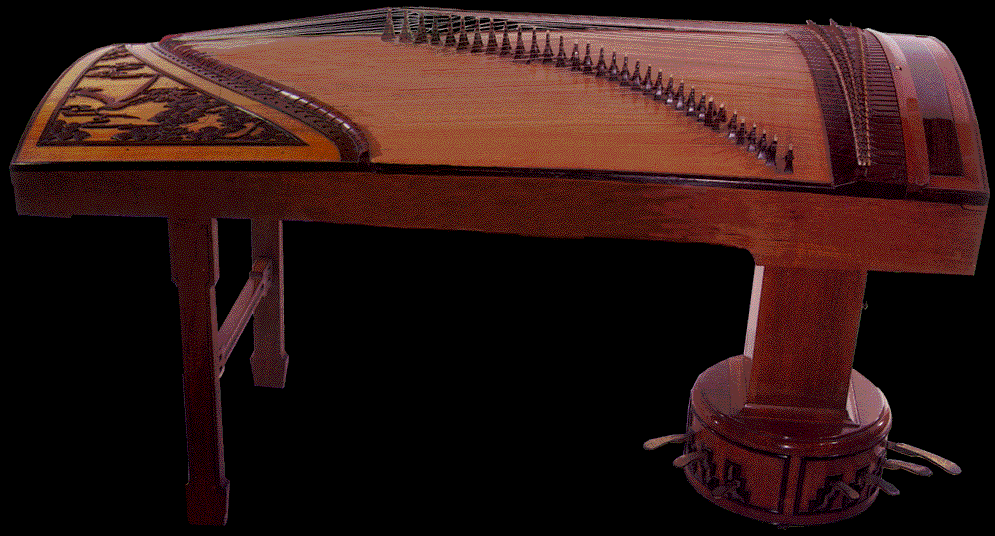 |
 |
| Zheng - guzheng The zheng or guzheng is the parent instrument of the Asian long zither family. Originally believed to have been invented during the Qin Dynasty (897-221 BC), and new evidence has shown that the zheng may even be older (in Mandarin the prefix “gu” means “antiquity”). In the first century AD, the zheng is described as a plucked half-tube wood zither with movable bridges, over which a number of strings are stretched, and in the 2nd century BC the zheng was described as having twelve silken strings and high narrow jade bridges. The modern zheng usually has 21 to 25 strings made of metal wound with nylon. There have been many attempts to modernize the zheng by adding more strings, tuning devices, and pedals like those on the concert harp, but few of these “improvements” have taken hold. The zheng is traditionally tuned to a pentatonic scale, but many modern scales range from combinations of different pentatonic scales, to diatonic and semi-chromatic scales. The performer uses the right hand to pluck the strings, with the left hand pressing the string on the left side of the bridge to produce vibrato, pitch alterations or slides. In contemporary practice, the left hand often joins the right hand to play a counter-melody. Experimental techniques can include bowed, hammering and preparing the strings. The zheng has played an important part of Chinese history as both a court and folk instrument, and many centuries old stylistic schools of playing the zheng are still in existence today. The zheng has only recently been used in New Music, jazz, and experimental music with many of these innovations being pioneered by Mei Han and Randy Raine-Reusch. Country: China Region: Asia Type: zither |
 Zheng, guzheng - standard 21 string |
 A rare pedal zhneg |
| © R. Raine-Reusch, May 2002 |